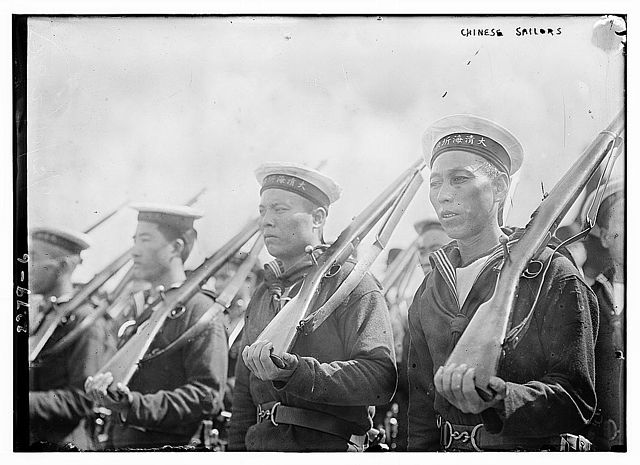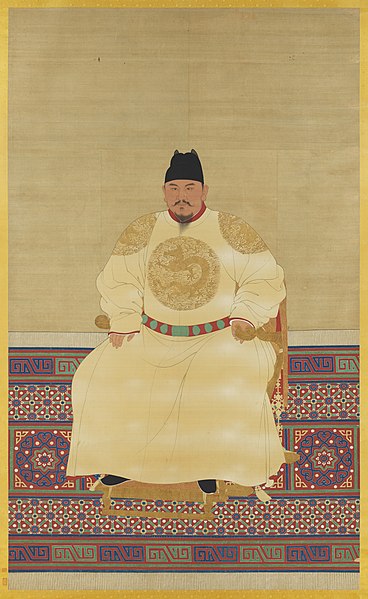The naval history of China dates back thousands of years, with archives existing since the late Spring and Autumn period regarding the Chinese navy and the various ship types employed in wars. The Ming dynasty of China was the leading global maritime power between 1400 and 1433, when Chinese shipbuilders built massive ocean-going junks and the Chinese imperial court launched seven maritime voyages. In modern times, the current People's Republic of China and the Republic of China governments continue to maintain standing navies through the People's Liberation Army Navy and the Republic of China Navy, respectively.

Legend: "The great ships full of boys and girls sent in search of the immortal medicine (Hôraizan) by the Chinese Emperor Shih Huang Ti (Shikôtei), c. 219 BCE". A 19th century ukiyo-e by Kuniyoshi depicting the ships of the great sea expedition sent around 219 BC by the first Chinese Emperor, Qin Shi Huang, to find the legendary home of the immortals, the Mount Penglai, and retrieve the elixir of immortality.
A Song dynasty junk ship, 13th century; Chinese ships of the Song period featured hulls with watertight compartments.
Chinese sailors from the Hai Chi, of the Imperial Chinese Navy.
Sa Zhenbing
The Ming dynasty, officially the Great Ming, was an imperial dynasty of China, ruling from 1368 to 1644 following the collapse of the Mongol-led Yuan dynasty. The Ming dynasty was the last imperial dynasty of China ruled by the Han people, the majority ethnic group in China. Although the primary capital of Beijing fell in 1644 to a rebellion led by Li Zicheng, numerous rump regimes ruled by remnants of the Ming imperial family—collectively called the Southern Ming—survived until 1662.
Portrait of the Hongwu Emperor (r. 1368–98)
The Great Wall of China: Although the rammed earth walls of the ancient Warring States were combined into a unified wall under the Qin and Han dynasties, the vast majority of the brick and stone Great Wall seen today is a product of the Ming dynasty.
A 17th-century Tibetan thangka of Guhyasamaja Akshobhyavajra; the Ming dynasty court gathered various tribute items that were native products of Tibet (such as thangkas), and in return granted gifts to Tibetan tribute-bearers.
Portrait of the Yongle Emperor (r. 1402–24)








